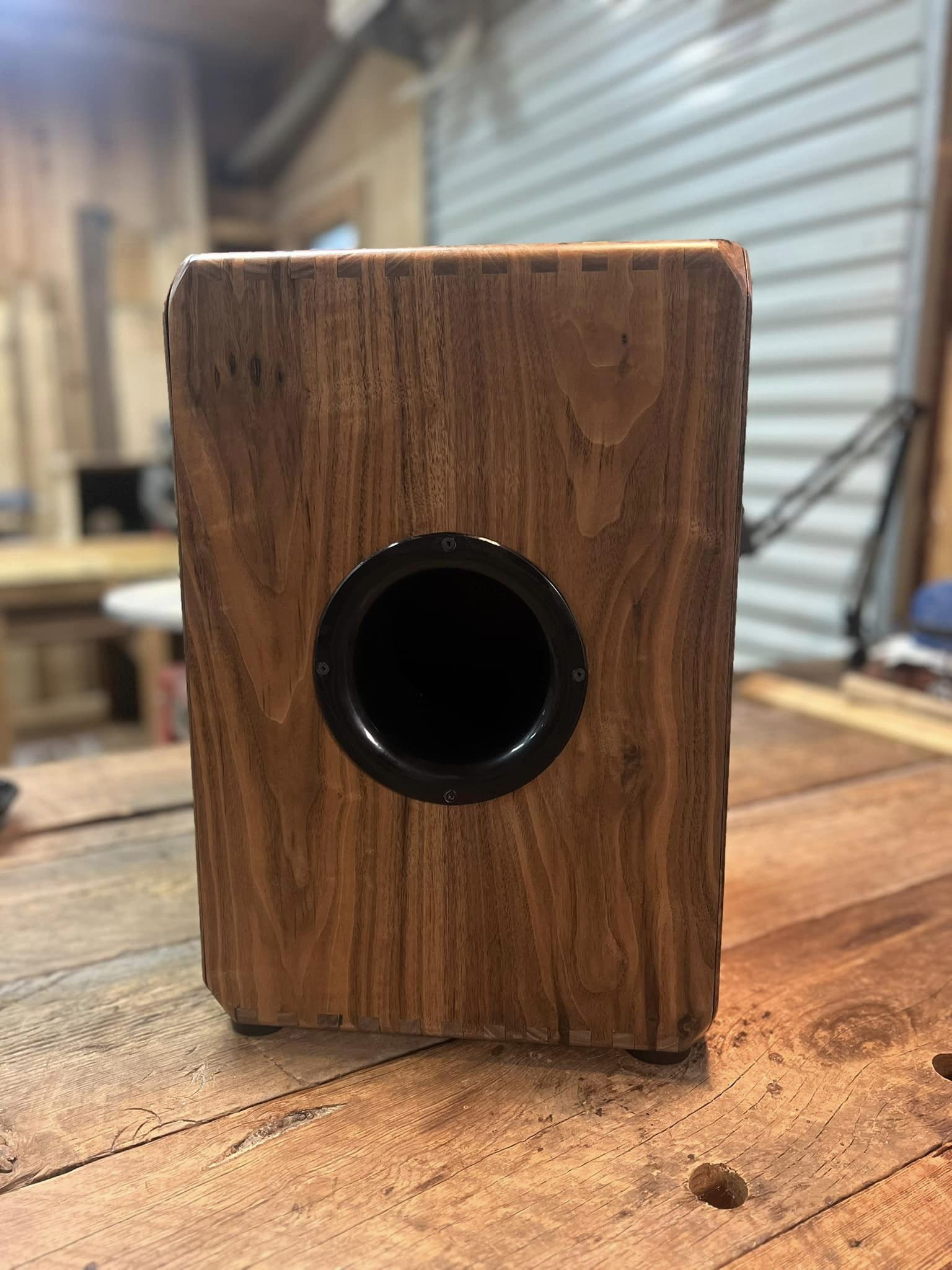Posted by Steve Head on 23rd Jul 2024
Enhancing Cajon Sound with a Bass Port
As a passionate cajon builder, I am always on the lookout for ways to improve the sound quality and playability of my instruments. One of the intriguing innovations in the percussion world is the bass port. This blog post delves into how this device works and its specific impact on cajons.
What the Bass Port Does
The bass port operates on principles similar to those used in enhancing bass drums. It is inserted into the sound hole of a cajon, typically fitting holes between 4.5" and 5" in diameter. Here’s what it does for the sound of the cajon:
- Enhanced Low-End Response: The bass port increases the depth and presence of the cajon's bass notes. This added low-end power makes the cajon sound fuller and more resonant, which is especially beneficial in performance settings where a more robust bass response is desired.
- Improved Sound Separation: By enhancing the distinction between the bass and snare sounds, the bass port creates a more versatile and expressive instrument. This separation allows for clearer, more precise sound production, making it easier to achieve the desired tones and dynamics.
- Reduction of Boxiness: One of the common issues with cajons is a boxy, less defined sound. The bass port helps mitigate this by smoothing out the sound and providing a more focused, natural overall tone. This results in a cleaner and more professional sound quality.
- Greater Projection: The design of the bass port helps project the cajon's sound more effectively. This increased projection ensures that the instrument can be heard clearly in various performance environments, from small venues to larger stages.
How the Bass Port Works
The bass port works through a combination of acoustic principles and innovative design:
- Port Design: The bass port’s design resembles that of a bass reflex port found in high-quality speaker enclosures. When inserted into the cajon’s sound hole, it acts to control the flow of air in and out of the drum. This control helps enhance the low-end frequencies by allowing the air to move more freely and reducing the resistance that typically dampens the bass tones.
- Air Flow Regulation: By regulating the airflow, the bass port minimizes the turbulent air that causes a boxy sound. This smoother airflow results in a cleaner, more focused bass response. The port essentially tunes the cajon’s body, optimizing the resonance of the lower frequencies.
- Material and Shape: The material and shape of the bass port are engineered to withstand the vibrations and pressures inside the cajon while providing a precise fit. The port's shape helps in directing the sound waves more effectively, contributing to the overall sound projection and clarity.
- Dynamic Balance: The bass port’s ability to enhance sound separation between bass and snare hits comes from its balanced design, which supports the dynamic range of the cajon. It prevents the bass notes from overwhelming the snare sounds, thereby achieving a balanced and distinct tonal output.
Practical Application in Cajons
For cajon builders and players, incorporating the bass port can be a game-changer. Here’s how you can leverage this innovation in your cajons:
- Installation: The bass port is straightforward to install. It involves fitting the port into the existing sound hole of the cajon. Depending on the specific dimensions of your cajon's sound hole, you might need to use sizing bands to ensure a snug fit.
- Sound Customization: By experimenting with different placements and adjustments, you can tailor the sound of your cajon to suit various musical styles and performance needs. The flexibility of the bass port allows you to customize the instrument’s tonal qualities easily.
- Performance Benefits: For performers, the enhanced sound quality and projection offered by the bass port mean that your instrument will perform well in both acoustic and amplified settings. Whether you’re playing in a drum circle, a small acoustic set, or a larger amplified gig, the bass port-equipped cajon delivers consistent, high-quality sound.
Conclusion
Incorporating innovations like the bass port into cajon building is an exciting way to push the boundaries of what these instruments can achieve. By enhancing the low-end response, improving sound separation, reducing boxiness, and increasing projection, the bass port transforms a standard cajon into a more powerful and versatile instrument.
As always, my goal is to blend tradition with innovation, ensuring that every cajon I build offers the best possible sound and playability. If you’re interested in experiencing the benefits of the bass port, feel free to reach out or check out the latest additions to my American ToneWood Series, where I continually strive to incorporate the best of both worlds.
As an Amazon Associate, I earn from qualifying purchases. This means that if you click on the link and make a purchase, I may receive a small commission at no extra cost to you. This helps support my work in providing quality content. Thank you for your support!





